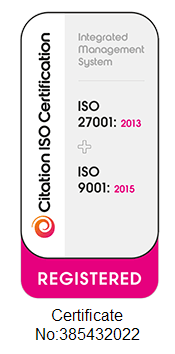Being in severe debt can be a worrying and stressful time. It can take its toll on your health and wellbeing as well as your relationships and professional life. So, it is natural to want to take the necessary steps to improve your financial situation. The most important thing is to understand your options and weigh up the pros and cons of each.
Bankruptcy is often viewed as one of the most serious and “last resort” debt solutions, but this isn’t always the case. There is life after debt — if the debt is resolved in the most appropriate way. Keep reading to find out the pros and cons of bankruptcies in the UK.
How Do I Know if Bankruptcy Is Right for Me?
Anyone with debts of over £5,000 can apply for their own bankruptcy. It may be seen as a quick route out of debt, especially if you don’t have any assets that you risk losing in bankruptcy, but it is worth making sure you get debt advice before making your final decision as it’s not easy to take back once the Order has been granted.
Before committing to any formal debt solution, and if you feel comfortable doing so, approach your lenders for a payment holiday, break from interest or reduced payments. Many lenders will be more lenient than you expect — this is because if you file for bankruptcy or another type of insolvency, they will likely recover a lot less of the money owed to them.
If your lenders do not wish to offer you any kind of leniency, there may be other debt solutions available to you, such as a Debt Relief Order (DRO) or Individual Voluntary Agreement (IVA). Why not contact Debt Movement today to chat with one of our friendly and professional guides who can assess your situation and help you to choose the right debt solution?
What Is the Bankruptcy Process?
Once you have spoken to one of our friendly and professional guides, they may have agreed that bankruptcy is the right debt solution for you. If this is the case, and you’re in England and Wales, you will need to fill out your bankruptcy form on the government website and pay your fee of £680 (£130 application fee and £550 bankruptcy deposit). This fee can be paid in instalments, however, you can’t progress to the next stage until it has been paid in full. The cost of a bankruptcy application in Northern Ireland and Scotland is different, although the process is broadly the same. In Scotland, Bankruptcy is also referred to as Sequestration.
You will receive a letter from the Official Receiver (Accountant in Bankruptcy in Scotland) detailing everything you must do. Your accounts will then be frozen, and you will be interviewed by your trustee and must cooperate with their requests for information. Your trustee will decide whether you need to make monthly payments toward your debt and which of your assets will be sold.
After 12 months, if you have fully cooperated with your trustee, you will receive an automatic discharge from your bankruptcy and all remaining debts will be written off. If you are making payments into your bankruptcy, these payments will likely last for three years. Your bankruptcy will remain on your credit file for six years.
The Pros and Cons of Bankruptcy in the UK
The pros of bankruptcy are:
- Bankruptcy includes all unsecured debts.
- Interest is frozen (unless debts are paid in full, then you may have to pay statutory interest).
- After 12 months, all debt is written off and no further action will be taken by creditors.
- Many people find that bankruptcy is the quickest and cheapest debt solution.
- In England and Wales, the application can be done online and the fees can be paid in instalments.
The cons of bankruptcy are:
- Your employment may be affected by bankruptcy. Be sure to check your employment contract!
- If you own property or any other assets of value, they may be sold.
- Bankruptcy application fees are £680 in England and Wales, £647 in Northern Ireland and £200 in Scotland, and additional fees will be paid out of the sale of your assets.
- You will appear on the public Individual Insolvency Register/Register of Insolvencies whilst bankrupt, and the bankruptcy will appear on your credit file for six years.
- There may be other restrictions, you can find these on the government’s website.
If you are struggling with problem debt, don’t struggle in silence. Talk to one of our non-judgemental, professional guides about your concerns, and they will help you to begin your journey to financial freedom.













